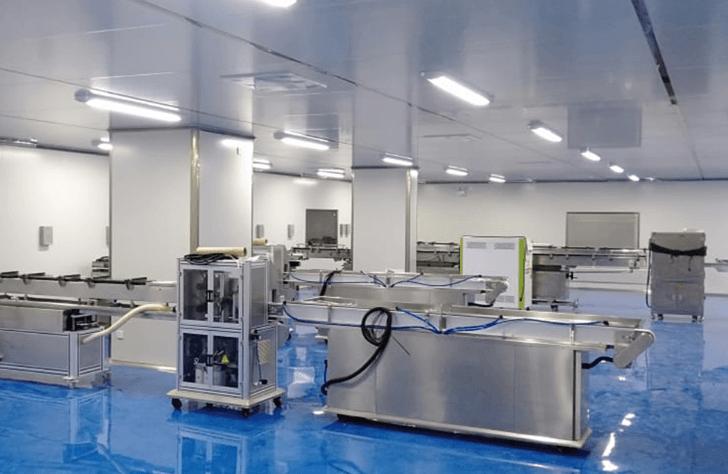
How to Choose the Right Extruder for Your Compounding Needs
In the medical equipment industry, choosing the right extruder for compounding needs is crucial for ensuring the production of high-quality materials. Compounding plays a vital role in manufacturing medical equipment, as it involves the precise blending of different materials to create compounds with specific properties.
This article aims to provide guidance on selecting the appropriate extruder for compounding needs in the medical equipment industry.
This article aims to provide guidance on selecting the appropriate extruder for compounding needs in the medical equipment industry.
Understanding Compounding Needs
Compounding is the process of combining various materials, such as polymers and additives, to create customized compounds with desired characteristics. In the medical equipment industry, these compounds are used to manufacture a wide range of products, including implants, surgical instruments, and medical tubing.
To choose the right extruder, it is important to identify specific compounding requirements, such as the types of materials to be compounded, the desired properties of the compounds, and the quantity of materials to be processed.
To choose the right extruder, it is important to identify specific compounding requirements, such as the types of materials to be compounded, the desired properties of the compounds, and the quantity of materials to be processed.
Types of Extruders
Single-screw extruders
Single-screw extruders are widely used in compounding applications. They operate based on the principle of a rotating screw inside a barrel, which conveys, melts, and mixes the materials. Single-screw extruders are suitable for compounding processes with lower shear requirements and are generally more cost-effective. However, they may have limitations in achieving high levels of mixing and dispersion.
Twin-screw extruders
Twin-screw extruders offer several advantages over single-screw extruders in compounding applications. They consist of two intermeshing screws that work in tandem to transport, melt, and mix the materials.
Twin-screw extruders provide excellent mixing capabilities, allowing for better dispersion of additives and achieving higher levels of compound uniformity. They are suitable for compounding processes that require thorough mixing, reactive compounding, or the incorporation of high-loadings of additives.
Twin-screw extruders provide excellent mixing capabilities, allowing for better dispersion of additives and achieving higher levels of compound uniformity. They are suitable for compounding processes that require thorough mixing, reactive compounding, or the incorporation of high-loadings of additives.
Co-rotating vs. counter-rotating twin-screw extruders
Twin-screw extruders can be further categorized into co-rotating and counter-rotating types. Co-rotating extruders rotate in the same direction, while counter-rotating extruders rotate in opposite directions. Co-rotating extruders are commonly used in the medical equipment industry due to their superior mixing capabilities and higher throughput. Counter-rotating extruders are suitable for applications that require specific shear or compounding effects.
Factors to Consider in Extruder Selection
When choosing an extruder for compounding needs, several factors should be taken into consideration:
●Throughput requirements
Evaluate the required production capacity to determine the extruder size and throughput capabilities. Consider both current and future demands to ensure scalability.
●Material compatibility
Ensure that the extruder is compatible with the materials to be compounded. Consider factors such as temperature sensitivity, shear sensitivity, and chemical reactivity.
●Temperature control capabilities
Some materials require precise temperature control during the compounding process. Select an extruder with the appropriate heating and cooling zones to maintain optimal processing conditions.
●Screw design and configuration
Different screw designs and configurations offer varying levels of mixing, dispersion, and residence time. Choose a screw design that suits the specific compounding needs, such as co-rotating or counter-rotating, and consider factors like pitch, flight depth, and screw element types.
●Residence time and mixing efficiency
Evaluate the residence time distribution and mixing efficiency of the extruder. The residence time should be controlled to prevent the degradation of heat-sensitive materials, while efficient mixing ensures uniform dispersion of additives.
●Maintenance and ease of cleaning
Consider the ease of maintenance and cleaning procedures. Extruders with easy access for cleaning and quick screw and barrel changes can significantly reduce downtime and improve overall productivity.
●Additional Considerations
In addition to the key factors mentioned above, there are a few other aspects to consider when choosing an extruder for compounding needs in the medical equipment industry:
Integration with downstream equipment: Ensure compatibility and seamless integration of the extruder with downstream equipment, such as pelletizers, feeders, or injection molding machines. This promotes smooth material handling and efficient workflow.
Integration with downstream equipment: Ensure compatibility and seamless integration of the extruder with downstream equipment, such as pelletizers, feeders, or injection molding machines. This promotes smooth material handling and efficient workflow.
●Energy efficiency and sustainability aspects
Look for extruders that are designed with energy-efficient features, such as advanced heating and cooling systems, to reduce energy consumption and minimize environmental impact.
Support and service from equipment manufacturers: Consider the reputation and track record of the extruder manufacturer. Opt for manufacturers that offer reliable support, technical assistance, and timely maintenance services to address any issues that may arise during the extruder's lifespan.
Support and service from equipment manufacturers: Consider the reputation and track record of the extruder manufacturer. Opt for manufacturers that offer reliable support, technical assistance, and timely maintenance services to address any issues that may arise during the extruder's lifespan.
●Cost considerations
While cost is an important factor, it should not be the sole determining factor. Consider the long-term benefits and value that the chosen extruder can provide in terms of productivity, quality, and reliability. It is often more cost-effective to invest in a high-quality extruder that meets specific compounding needs, rather than compromising on performance.
Conclusion
Selecting the right extruder is essential for meeting compounding needs in the medical equipment industry. By choosing the appropriate extruder, manufacturers can achieve optimal compound quality, improve productivity, and ensure the production of high-quality medical equipment. Consultation with industry experts and equipment manufacturers can provide valuable insights and tailored recommendations for individual compounding needs.



